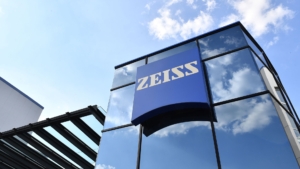Many modern technology companies are created by teams of young, idealistic founders who truly want to make the world a better place. Their business ideas are often born from a genuine desire to fix a certain societal problem. In an ideal scenario, they can align their purpose and their profits: every dollar they make also advances their cause. Think of a company that produces solar panels or makes an app to buy food that would otherwise go to waste. On the surface, this sounds like a perfect equation: as the company’s business scales, so does its positive impact.
Unfortunately, this genuine willingness to be mission-driven is not enough. The world is complicated. What sounds like a business model that generates a purely positive impact can have surprising negative side effects. As the company grows bigger, it might need to venture into business areas that are no longer aligned with its original mission in order to sustain growth.
If a company is structured in a traditional way, it still needs to ultimately listen to the demands of its stockholders. If the stockholders are primarily interested in maximizing their profits — and this is often the case for any company that is public or has sold more than 50% of its equity to venture capitalists — the company’s management is incentivized to put its social mission on the backburner and focus on profits and growth instead.
Steward-ownership is a company structure designed to ensure that our company’s profits are purely a means to pursue its mission, and forever removes any personal financial incentive of profit maximisation from the company’s management. The steward-ownership structure is protected with a foundation structure and can never be dismantled once introduced.
From now on, it’s in the best interest of your management to put our social mission first, even if that means slowing down your growth. Everyone working in the company is incentivized, first and foremost, to make decisions that benefit not just the owners of the company, but all other stakeholders, the environment, and society at large. After this change, you can finally — confidently — say that your company will always be a force for good in society
History of steward-ownership
Steward-ownership is relatively new as a term, but the underlying concept is almost as old as limited liability corporations, the structure adopted by most modern companies. The original steward-ownership model was invented by Ernst Abbe, co-owner of the successful German optics manufacturing company ZEISS, founded in 1846. Abbe had worked as a professor at the university of the city of Jena, where he invented the technology behind ZEISS’s success. This likely led him to the insight that the value and the profits created by ZEISS did not belong just to him, but to everyone working at the company and society at large.
After the company’s founder Carl Zeiss died in 1888, Abbe created the Carl Zeiss foundation, which has owned ZEISS ever since. The foundation ensures that the company cannot be sold and profits are either reinvested or donated to the common good. Abbe then introduced several important rights for the workers, amongst them a health and pension insurance for the workers and an 8-hour workday. He also instituted a principle that the highest salary of any ZEISS employee cannot be higher than 12 times the lowest salary a worker gets after being at the company for two years.
Today, more than hundred years later, ZEISS is thriving. Its business consists of manufacturing optical systems, industrial measurements, and medical devices. Its annual revenue exceeds 5 billion euros and annual profits 600 million euros. Charitable donations from ZEISS are an important source of funding for the university of Jena, where its technology was originally created.
Since then, several other major companies have adopted similar structures. The most well-known ones include German engineering and electronics company Bosch (revenue 78 billion euros and profit 5.3 billion euros in 2017) and British department store chain John Lewis (revenue 2015 11 billion pounds and profits more than 400 million pounds).
Steward-ownership is not only reserved for “impact companies” trying to cure diseases, build technology for renewable energy, or tackling poverty. The model can be applied to any company that is building useful products, like the examples of Bosch, John Lewis and ZEISS show. The purpose of the structure is simply to make sure that our companies are in service of society, not the other way around.If the management of a steward-owned company comes to the conclusion that the company’s net impact is no longer positive due to its negative externalities, the management is incentivized to change the company’s ways.



